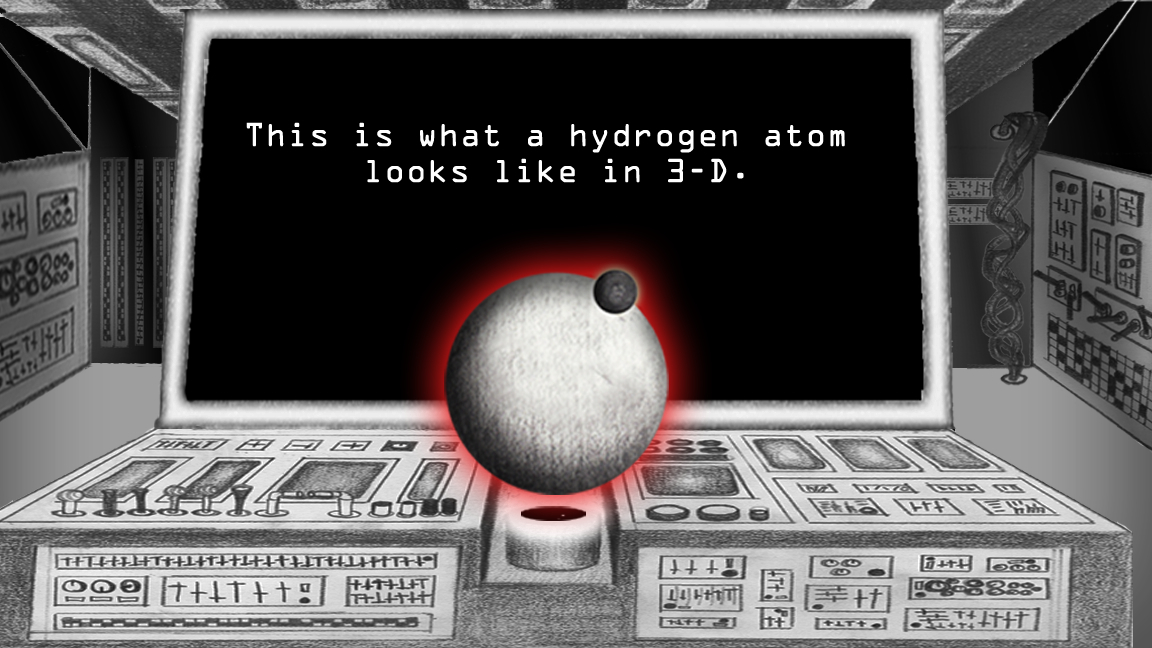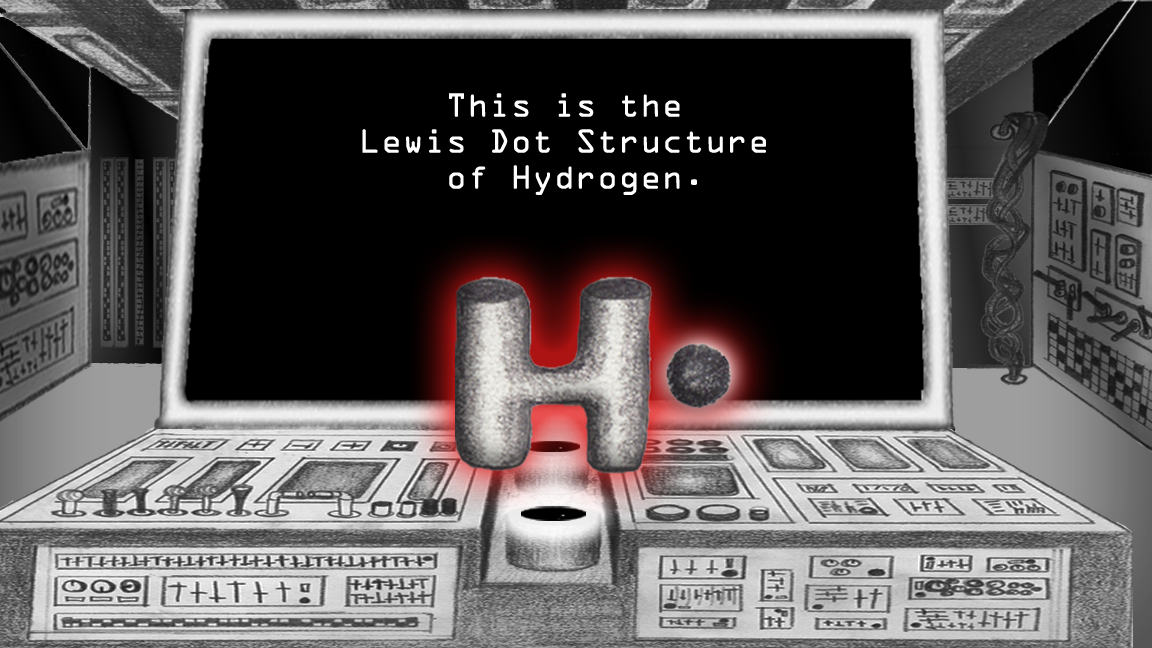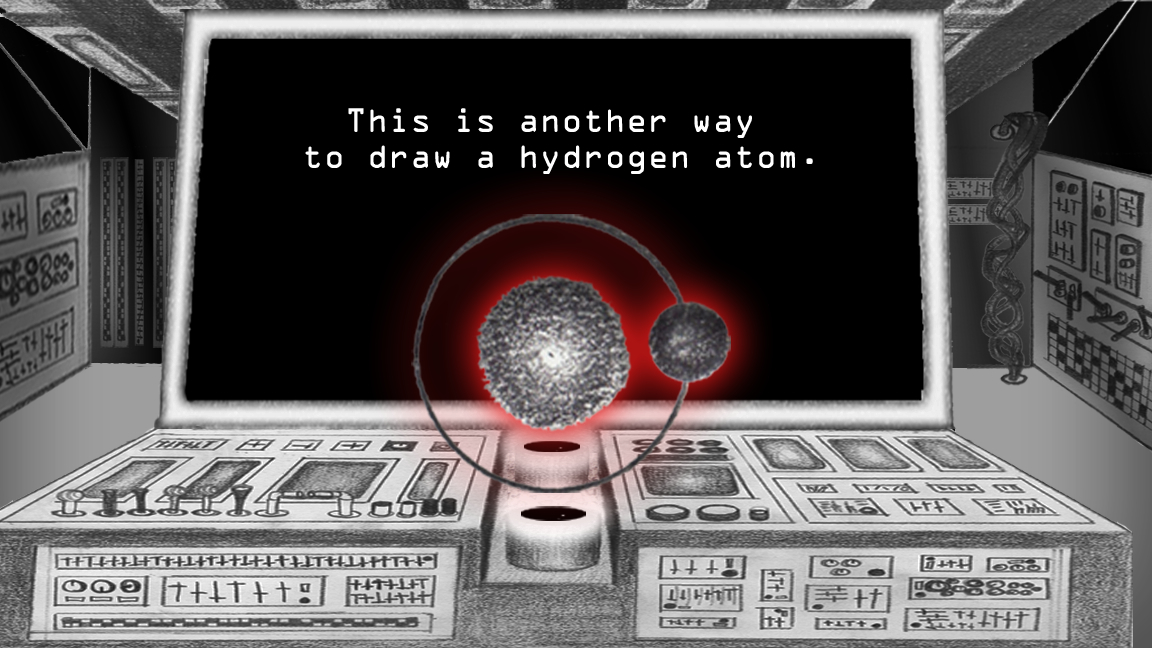by Gabe Turow and Will Jordan-Cooley
Introduction: An Atomic Explosion Drawn in Pencil
Overview
Atomic Avengers is a take on air hockey: Set in space, we substitute atoms for pucks, realistic atomic physics for tiny air jets, and spaceships for hitters. The goal of the game is knock as many atoms into the other person's goal as possible. Players can make molecules on the fly by directing atoms to knock into one another - the bigger the molecule you get into your opponent's goal the more points you get. The game is over when a player reaches 50 points.
Learing About Hydrogen and Oxygen Atoms
Details
This was conceptualized and designed as a learning environment in which players can build their understanding of a complex system with minimal direct instruction. Using scaffolding and interactive game-play mechanics, the player-experience is structured to gradually introduce complexity over time. The molecular dynamics of hydrogen and oxygen were chosen as subject matter because this system can be simulated to some degree of accuracy in a 2-D plane, and is not a system with which we can normally interact (because it exists on the atomic level). The target audience is middle to high school students; the game is meant to supplement their ongoing chemistry coursework.




Embodied Experience
In their review of embodied cognition in 2004, Drs. Garbarini and Denzato make the claim that neuroscience and cognitive theories were “converging towards the current paradigm of embodied cognition” which is how “action and simulation” are involved in cognitive processes, which lead to the “perceptual recognition of objects and actions, and to their conceptual categorization” (p. 100). In other words, students learn best not just by doing an exercise, but by also using their imaginations and pretending to be in the exercise, while watching others in the exercise. By using simulations of varying sophistication, and playing a role through a representative avatar (Meluso et al., 2012), teachers can engage more of the students’ senses and capacities, and as a result, they will make more meaning of what they are taught.
Through physical actions that return quick feedback (a computer-game, for example), students learn to make associations between what they are doing and the ideas they have been discussing. This provides a rich cognitive context for processing new information. By pretending to be certain people and play certain roles, ideas can be explored in much more depth. Wilson and Foglia (2011) explain:
Embodied cognitive science appeals to the idea that cognition deeply depends on aspects of the agent's body other than the brain. Without the involvement of the body in both sensing and acting, thoughts would be empty, and mental affairs would not exhibit the characteristics and properties they do. (p. 2)
Wilson and Foglia, in the Stanford Encyclopedia of Philosophy, review three claims of embodied cognition that are directly relevant to video games and learning. These statements argue for the connection between the mind and body in your ability to process and comprehend the world:
I. “Vision is often action-guiding, and bodily movement and the feedback it generates are more tightly integrated into at least some visual processing than has been anticipated by traditional models of vision” (O'Regan & Noë 2001). In other words, what you see drastically affects your body movements, and your body movements can affect what you see through adding feedback about the world back into your visual centers. This view of cognition seems to center on the idea of your mind and body testing and constantly retesting the environment, making corrections as it goes.
II. “There are neurons, mirror neurons, that fire not only when we undertake an action, but do so when we observe others undertaking the same actions” (Rizolatti & Craighero 2004). The same parts of your brain that are active when you are doing an action are active when you watch someone else do that action.
III. “We are often able to perform cognitive tasks, such as remembering, more effectively by using our bodies and even parts of our surrounding environments to off-load storage and simplify the nature of the cognitive processing (Donald 1991).” In other words, when you learn something it may help to put it on a mental “shelf” of sorts. In this way, it is useful to customize your surrounding to make it easier to remember things - using sticky notes, piles of paper, folders, etc. Situating it within a physical or metaphorical place, such as within a book you just read, will make remembering that idea easier later. For example, it is enough to look at the cover of a book on your shelf and you will be able to remember many of the ideas it contains. This would argue for flexible mental representations of information, based on personalized imaginary world. People capable of unusual feats of memorization describe using this kind of visualization technique to place numbers or objects in mental spaces for later recall, or to use those object to spur recall of the next item in a list (Foer, 2012).
Learning Objectives
The learning objective of the game is to facilitate an intuitive understanding of collision theory using the specific case of hydrogen and oxygen. There are several components to this:
Bonds can form and be broken, and do so continuously;
O and H can form several different molecules, the most common of which are hydrogen gas(H2), oxygen gas(O2), hydroxide (OH), and water(H2O).
O2 and H2 are stable molecules and will not react without some promptin“, but, once broken into individual atoms, will react readily.
Introduction to Atoms:





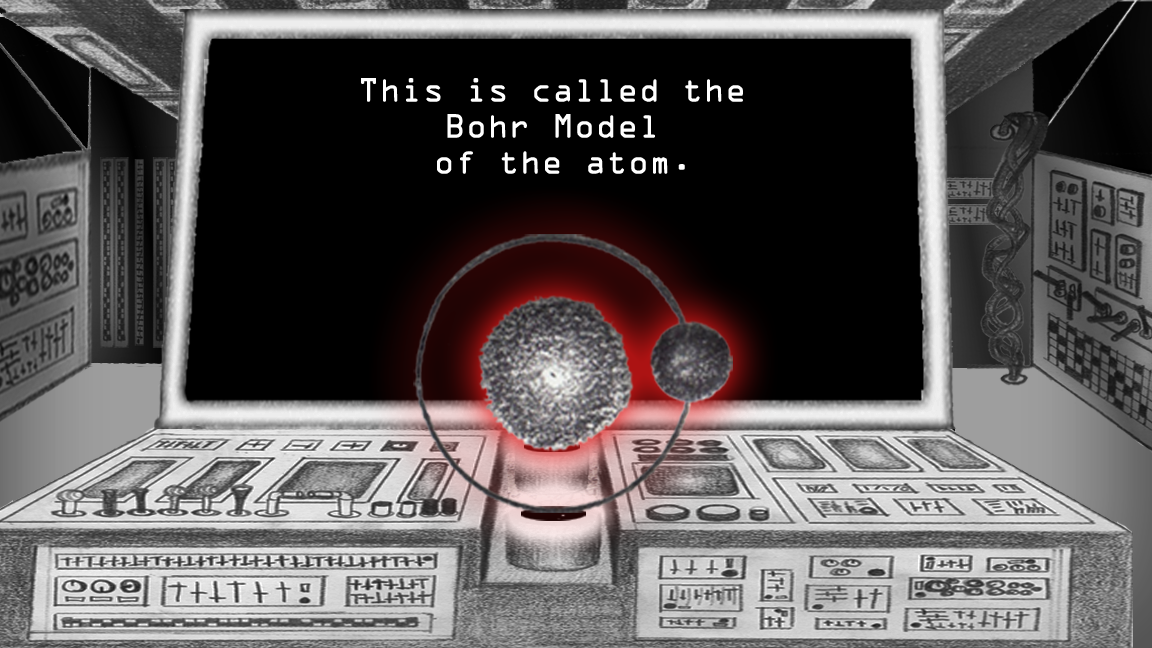

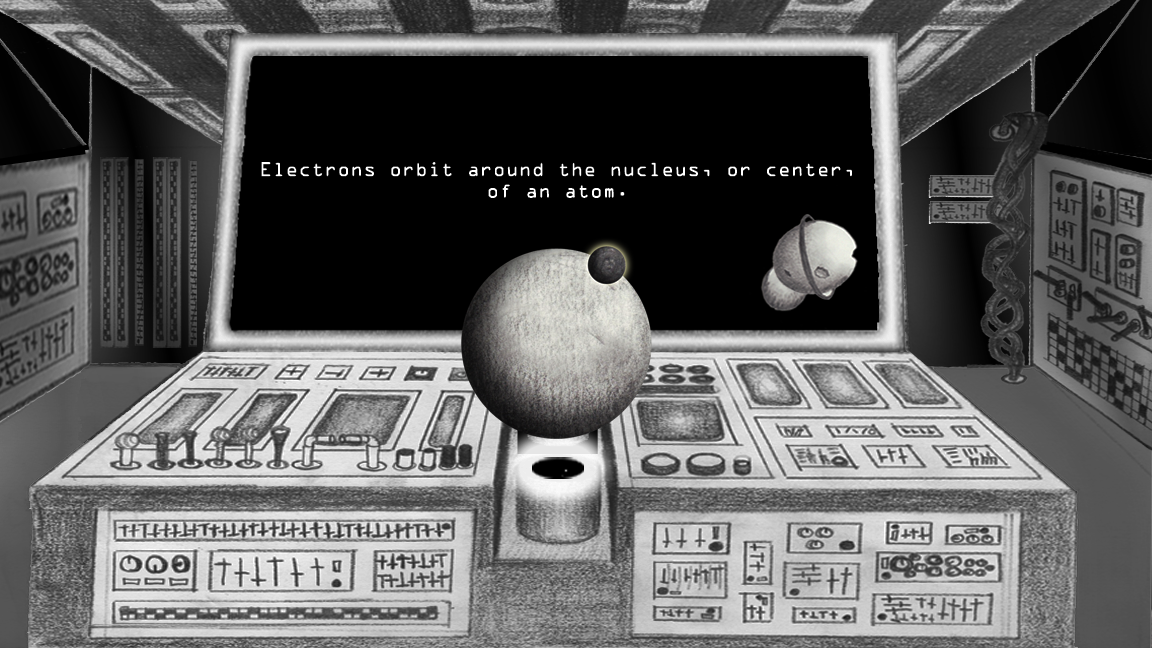

Hydrogen Learning Sequence:











Oxygen Learning Sequence:










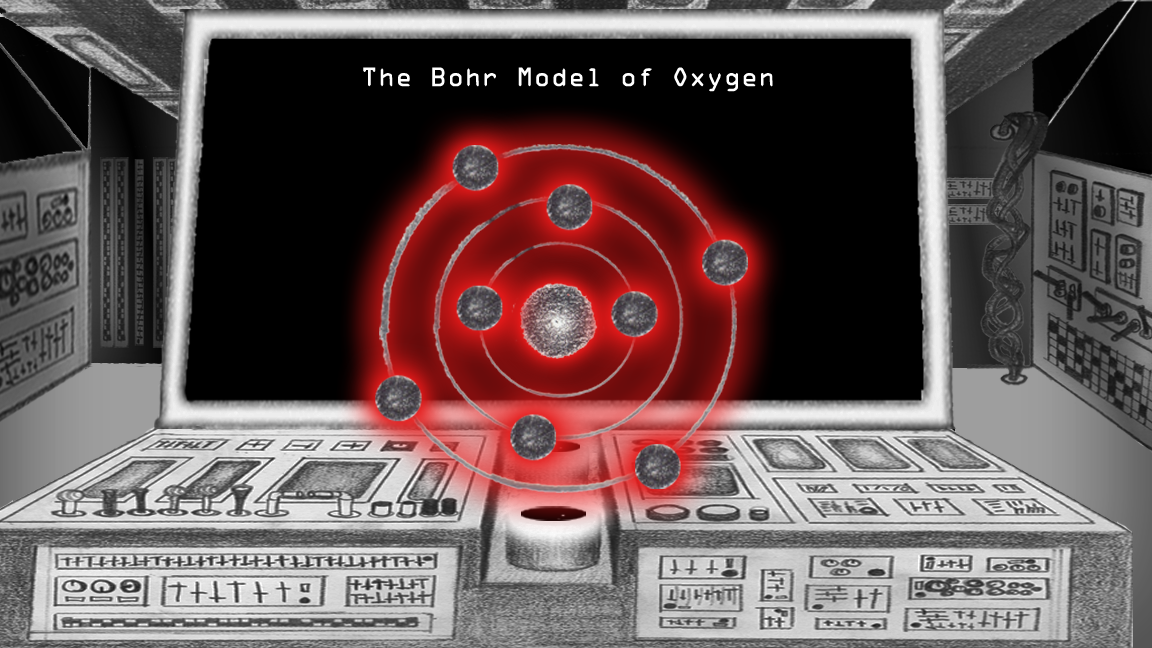

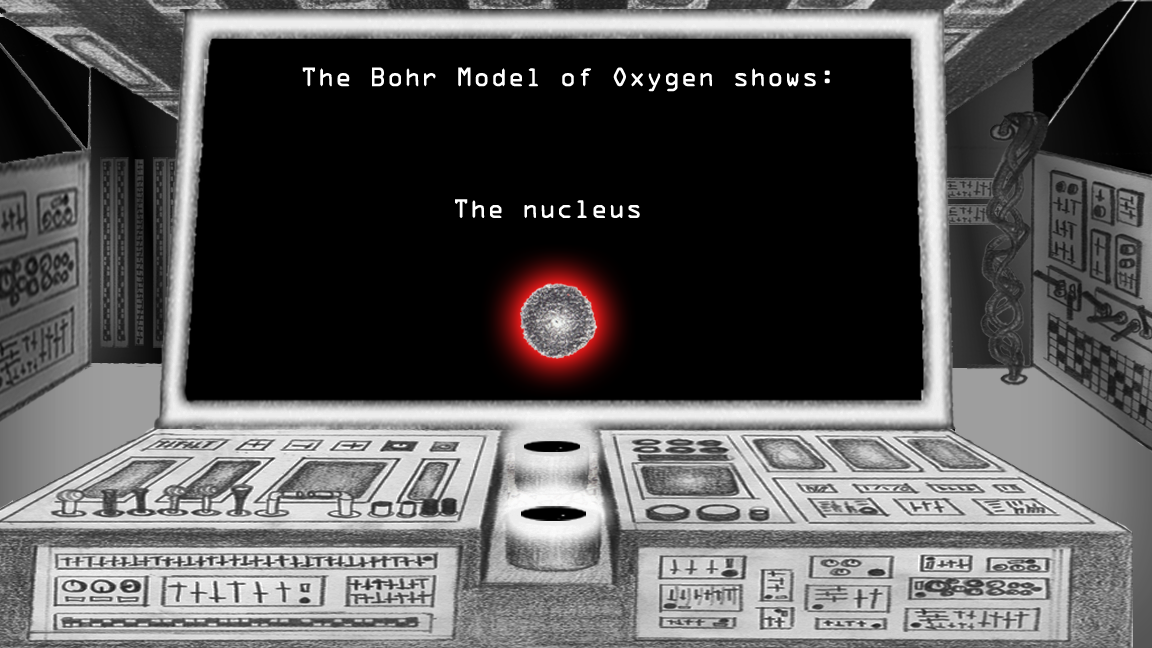
Visualizing Invisible Things
Turning these ideas into symbolic, visual forms was our challenge for this game. It is a challenge for good science education in general to assign a face to tiny particles, and microscopic things, and invisible energies/processes. To take Atomic Avengers as anexample, our game tries to make concepts pertaining to atoms and molecules more manageable by allowing the player to pretend to control atoms via a tiny spaceship they are piloting. More, by allowing the player to choose the representation of the atom that they find the most intuitive, they will begin to grapple with the idea that atoms have a shape and some similar properties to other objects they are familiar with. This effort was to allow the student to get a more concrete feel for atoms and their behavior without relying too heavily on their mind’s eye or mathematical equations.
Transition screens between games offer brief lessons on atoms and molecules, and explain how they can be used more effectively during nano-scale space battles:
See the videos I prepared here: https://youtu.be/knd2NocMHok and here: https://youtu.be/NW5rVDRtLzM.
All of the graphics for this game were drawn on paper, scanned, processed in Adobe Photoshop, and then in certain cases, animated in Adobe After Effects. The artwork and music were meant to inspire a playful, spacious atmosphere, highlighting the actual connection between the atoms we depict, and their origins in the cosmos and the anaLOGOus planetary-scale mechanics of heavenly bodies. We imagined that hand-drawn artwork would encourage a type of intimacy with the material that might not be achieved by a more sanitized, computer-generated game-play environment. The music itself is upbeat, but not hyperactive, intended to keep the players engaged in the action of the game.
Referencing/evoking the reverberations of atomic collisions was our main objective for the sound effects in the game. The sounds were produced using a West African ceramic hand drum I built at Teachers College called an udu. Our team wanted the audio effects to evoke what it might sound like if a scientist put a miniature microphone inside of a beaker, and attempted to capture the sounds of atoms colliding. It is a fantastical notion, but we thought it was a useful one to animate our game.
Gameplay Considerations
We included a turn-based mode as the intended entry point into the game. Here players have the chance to consider their actions carefully, think about the apparent motions and forces at work, and attempt to predict what will happen next. Similarly, one can play with O, H, or with both simultaneously. These modes of play are intended to be "unlockable" after a player has played the "easier" levels several times. We chose to make the game 2-player, both to take advantage of the natural diversity of play that arises in multi-player situations and, more importantly for learning, to provide a social space in which critical reflection of the game's representation of reality could potentially take place. In future versions, we would like to include a one-player puzzle mode to allow for solo play.
Details of the Simulation (by Will Jordan-Cooley)
In the simulation, oxygen and hydrogen are treated as individual atoms (in Gamemaker 8.1, this meant individual instances of objects, Hydrogen and Oxygen) which can form and break bonds according to collision theory. Their motion is governed by Newtonian mechanics. Intermolecular and intramolecular forces are determined by the Lennard potential and Morse potential. Essentially, atoms in a molecule will feel a repulsion when their radius is less than their average bond length and an attraction when their radius is greater than the average bond length but less than a cut-off. Beyond this cut-off (adjusted for fit with units imposed by software from the standard 2.5 times the bond length), bonds were considered to have been broken. The Lennard potential was used to produce a repulsive force between molecules that became very strong at close range. Other forces like the orientational forces holding the 105 degree angle of HOH in water were omitted for computation simplicity and a lack of time to program them. Intermolecular hydrogen bonding does occur within the simulation, though it is not very apparent in this version.


























